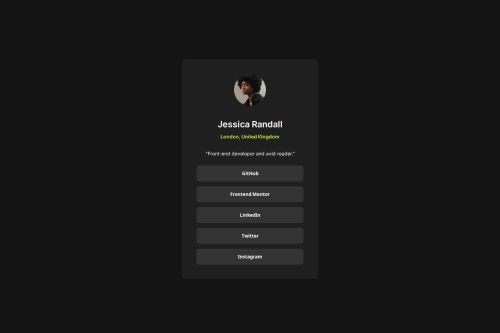Responsive Social Links Profile Using HTML & CSS

Solution retrospective
I'm most proud of the fact that I knew how to do a good bit of the styling without having to search google for most of it.
What challenges did you encounter, and how did you overcome them?-
The card wasn't centering vertically on the page and then I realized that I wasn't giving the grid container any height. I just had to adjust that, and then it fit the center of the screen.
-
Still not 100% sure why, but originally I was using Safari to view my page which was making the site look small, most likely due to my high dpi. It also was making the font sizes look different even after resetting using normalize.css. I ended up switching to just doing it on Chrome.
Is there a way to normalize how dpi is handled on webpages? I was getting a much smaller version of the social profile when viewing via Safari vs Chrome, even after using normalize.css.
The odd thing is that when viewing the Vercel uploaded site, even viewing on Safari looks normal. It just doesn't look right when I open it via Live Server.
Please log in to post a comment
Log in with GitHubCommunity feedback
No feedback yet. Be the first to give feedback on hackz101's solution.
Join our Discord community
Join thousands of Frontend Mentor community members taking the challenges, sharing resources, helping each other, and chatting about all things front-end!
Join our Discord